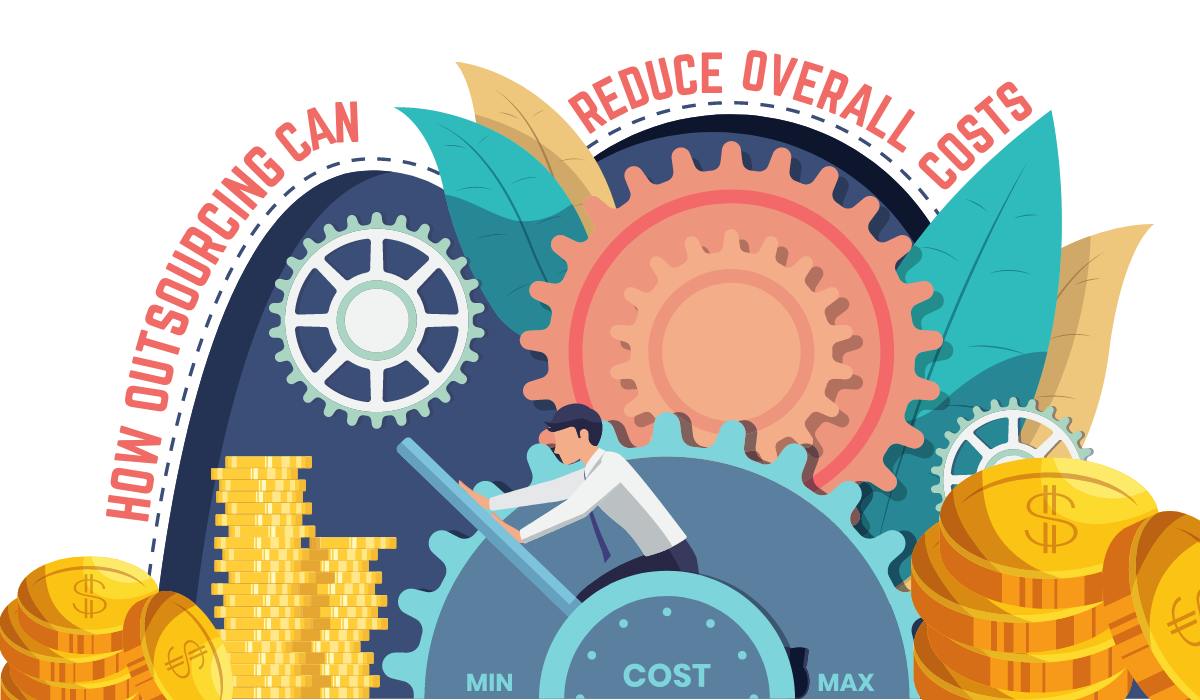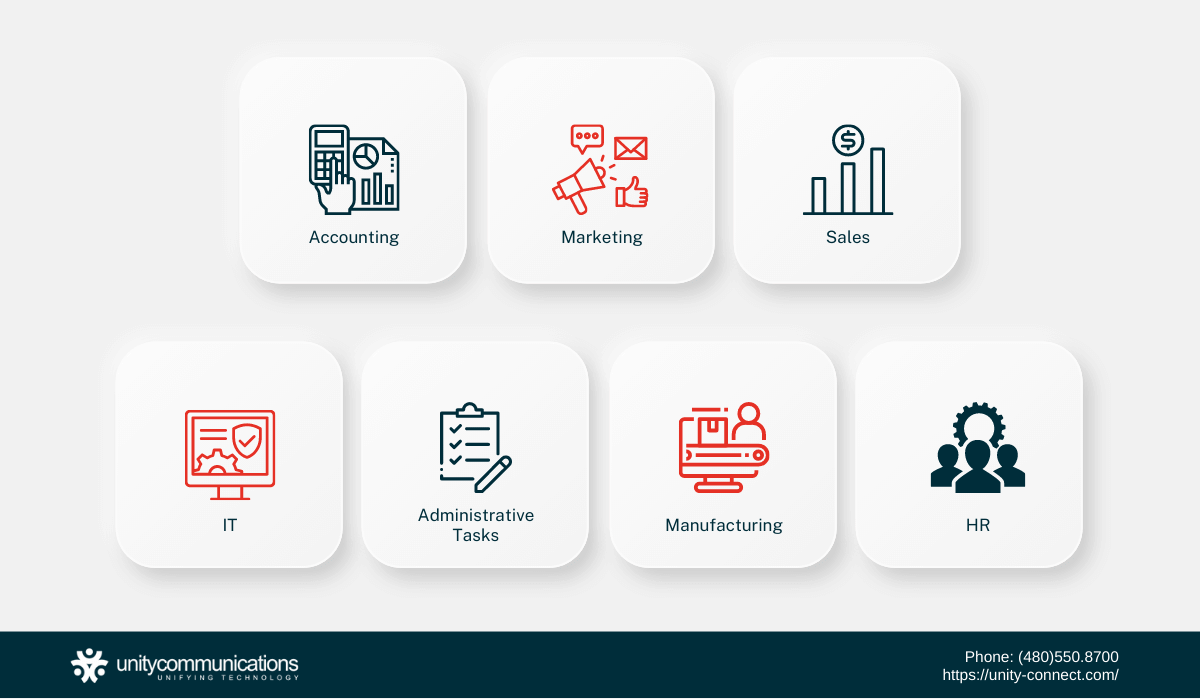Written by Allie Delos Santos
Contents
As a successful mid-sized business, you must carefully consider your growth and expansion. You may feel that business process outsourcing (BPO) can help transform your organization, save money, or free up time for your employees. In that case, you need to conduct a cost-benefit analysis for outsourcing to determine the costs and benefits involved.
Financial considerations are arguably the most important factor in outsourcing. Thus, this article explores how to revisit your strategy to successfully outsource business processes.
Status of the Global BPO Market
 Before we dive into the cost-benefit analysis for outsourcing, we need to talk about the market size for BPO. BPO is a multibillion-dollar industry, thanks to a shift in work culture and the need for workplace adaptation. In 2023, the global BPO market is expected to be approximately $280.6 billion.
Before we dive into the cost-benefit analysis for outsourcing, we need to talk about the market size for BPO. BPO is a multibillion-dollar industry, thanks to a shift in work culture and the need for workplace adaptation. In 2023, the global BPO market is expected to be approximately $280.6 billion.
That number is expected to grow tremendously from 2023 onward. We are not even considering figures from freelancing platforms such as Fiverr or Upwork.
Fun fact: As a benchmark comparison, the market size for BPO achieved an annual growth rate of 4.4% from 2012 to 2016. That percentage is now about 9.4% for 2023–2030.
The concept of business process as a service (BPaaS) seems to be a market growth driver. Banking, financial services, and insurance (BFSI), information technology (IT), and telecommunications comprised the bulk of the BPO market share in 2023.
Steps in Performing a Cost-benefit Analysis for Outsourcing
Now, on to the good stuff—it is time to start doing a cost-benefit analysis for outsourcing. Measuring return on investment (ROI) can be tricky, especially if it is your first time outsourcing. You need to weigh several costs and benefits; some are quantifiable (calculable), and others are qualifiable (conceptual).
1. Analyze Your Processes
Your first step in conducting a cost-benefit analysis for outsourcing is clearly defining your strategy and goals. Analyze your current processes and determine which ones you want to automate. Outline the goals and expected outcomes you want to achieve from the transition.
This first step is critical because it summarizes the remainder of your cost-benefit analysis. A clear understanding of your strategy (and the steps involved in the process) ensures clear communication and goal alignment with your chosen vendor. It also ensures that ROI is easy to calculate.
2. Calculate In-house Costs vs. BPO Costs
To analyze an outsourcing project’s cost-benefit analysis, you must know how much performing tasks in-house costs.
How much are you currently spending? What expenses would be necessary to achieve your goals if you kept processes in-house? Would you need more staff or equipment? Consider every factor and itemize every cost related to your chosen processes.
Note: Do not consider the money that has already been spent and cannot be recovered. We are focusing on avoidable future costs and expenses.
Next, perform a cost analysis of outsourcing that business process. What is the BPO cost? You need to gather quotes from your prospective service providers to make that comparison.
3. Analyze Potential Benefits
Lastly, subtract your in-house costs from your outsourcing costs to see the difference. Is there a significant difference that will affect your bottom line?
Carefully weigh both the financial and non-financial benefits. Consider any intellectual capital that might be gained. Also, note in your cost-benefit analysis whether your outsourcing provider can leverage its technology to increase your chosen tasks’ efficiency, effectiveness, and value.
Remember to invest in what matters most. The benefits should outweigh the cost of handling tasks in-house and help you achieve your goals.
How Outsourcing Can Reduce Overall Costs

Let’s begin with a surprising revelation: outsourcing doesn’t extinguish jobs; it cultivates growth within companies by allowing their U.S.-based employees to sharpen their expertise. Outsourcing consistently emerges as a driver of improved profitability when subjected to a straightforward cost-benefit analysis.
While outsourcing business processes to international partners isn’t novel, many companies harbor reservations. There are valid questions and concerns surrounding the value of outsourced work and the ease of communication. Nevertheless, the overall quality of BPO services has substantially improved in recent years to align with contemporary standards.
We share your enthusiasm for cost reduction and value maximization if you are on the fence about taking the plunge. You may be pleasantly surprised by how accessible and cost-effective BPO can be for your company.
Major Wage Differences
The most substantial avenue through which offshore outsourcing trims costs lies in the considerable wage differentials—an undeniable fact substantiated by any cost-benefit analysis of outsourcing.
In the Western world, the labor we provide commands a premium. In contrast, other regions offer the same services at substantially lower costs, often presenting savings of up to 70% or more. This discrepancy holds especially true for tasks such as data entry or customer service.
No Training or Recruitment Fees
During the evaluation of an outsourcing engagement through a cost-benefit analysis, you will likely observe minimal or non-existent training expenses. Since you are enlisting individuals already proficient in the requisite tasks, there’s no need for training.
Consequently, you sidestep training costs and avoid any downtime for your current team members. Moreover, there’s no need to allocate resources to recruiting potential full-time or contract employees. At most, you may need to engage in a video or phone call to discuss your business requirements.
Significant Infrastructure Savings
Here’s a piece of encouraging news: you won’t incur additional expenses for infrastructure or new office equipment. This translates to indirect cost savings for your organization. Your chosen BPO service provider comes equipped with all the necessary tools and resources to fulfill the task, including extensive equipment or expensive technology, thereby leading to substantial cost reductions.
Refocused Budgets
Delegating your processes at a lower cost affords you the opportunity to reallocate your budget strategically. This isn’t to imply that the outsourced tasks lack significance—quite the contrary, as they fulfill essential roles in your operations.
However, wherever costs are reduced, you gain flexibility to augment budgets in other areas that either generate revenue or hold a pivotal role within your business framework. For instance, saving 50% on data entry tasks allows you to allocate an additional 20% to 30% towards marketing or any other domain that warrants a financial boost, all without exerting undue pressure on your financial resources. A cost-benefit analysis of outsourcing can unveil the extent of potential savings awaiting your consideration.
Benefits of Outsourcing Your Business Processes

When you consider monetary savings, the benefits of offshore outsourcing keep adding up. We can go on about the long-term benefits of outsourcing your secondary processes. But we keep it simple and highlight only a few critical to your organization.
24/7 Support
Working with a service provider in the same time zone is beneficial. However, partnering with a company that has a 12-hour time gap is even more beneficial. This time zone difference means you can assign tasks during the day, go to sleep, and wake up with a finished product. Essentially, you can operate 24/7.
Low Fluctuations in the Workforce
Imagine a busy holiday season in the United States. Sometimes, the workforce dwindles or becomes less available to meet your needs. Outsourcing means you can hire from a larger talent pool that remains unaffected by fluctuations in the U.S.
Better Risk Management
Better risk management is an overlooked benefit of outsourcing. For example, a national disaster or crisis affects your in-house team or an area of your operations. The disaster or crisis does not affect individuals outside that area or in a different country. They can keep working and help keep your day-to-day work on track. So outsourcing is a strategic method to manage risk.
Increased Customization for Outsourced Services
This might be a given, but you can always customize how outsourced activities are completed. You can set project completion times, budgets, deliverables, and more. It is like having an on-call worker ready to do whatever you need them to do, except they live miles away.
Choosing Your Outsourcing Strategy
Before you look for an outsourcing provider, think about strategy. Conducting a cost-benefit analysis for outsourcing is one step. You want to outsource the business processes that make the most sense for your company, your current situation, and your plans for the future.
Do not take BPO long-term planning lightly. Think about your potential goals and what you want to achieve. Do you want to:
- Cut down on excess spending?
- Move in-house processes to third-party vendors?
- Gain a new perspective?
- Increase intellectual capital for your company?
- Expand your team without additional training and recruiting expenses.
- Nix processes that have little value?
- Remove cumbersome tasks to free up your employees’ time.
- Migrate to a more “virtual” business model?
Whatever your strategy, make a plan and document it. We do not recommend outsourcing your strategy creation. This is something personal that requires thought and careful consideration.
Current Examples of Outsourced Tasks

Customer service will be one of the most outsourced tasks in 2023. But you can hand over more aspects of your business.
- Accounting. Consider taking your finances to a third-party accountant. This might be tricky to outsource offshore due to currency differences. A skilled accountant based in your home country is the best choice.
- Marketing. Need to spruce up your current marketing strategies, graphic design, or ads? Outsourcing this process can give your branding a fresh perspective and creative edge.
- Sales. Consider outsourcing if you do not have the personnel to make those sales calls or create online funnels. Be sure to perform a cost-benefit analysis for outsourcing to maximize the benefits.
- IT. Along with customer service, IT management is a widely outsourced process. In 2022, the global IT market size was $565.2 billion, according to Straits Research. You can do much with IT, including software, hardware, programming, and web development.
- Administrative tasks. These are another tremendous set of activities to hand off. Virtual assistants (VAs) are becoming more popular, and hiring offshore VAs is an incredible way to save on per-hour rates. This includes everything from scheduling to managing your emails.
- Manufacturing. If you sell a physical product, taking your manufacturing overseas gives you more bang for your buck.
- HR. The most common way to utilize BPO for HR is to hire a recruiting service. These recruiters can do all the heavy lifting for you and send qualified candidates they have already vetted.
Unity Communications, a Global Award Winner for BPO
U.S.-based companies are excellent at research and development, creative endeavors, product development, and sales. But when it comes to repetitive, entry-level, and detailed tasks, outsourcing them to keep wages low and job satisfaction high is better.
Unity Communications ranks 402nd on the Clutch Top 1000 Global Service Providers list for 2022. The company is also a recipient of Inc.’s Power Partner Awards. If you want to get a taste of high-quality outsourcing and how it can benefit your company, let’s connect!

About The Author
Allie Delos Santos is an experienced content writer who graduated cum laude with a degree in mass communications. She specializes in writing blog posts and feature articles. Her passion is making drab blog articles sparkle.
Allie is an avid reader—with a strong interest in magical realism and contemporary fiction. When she is not working, she enjoys yoga and cooking.



